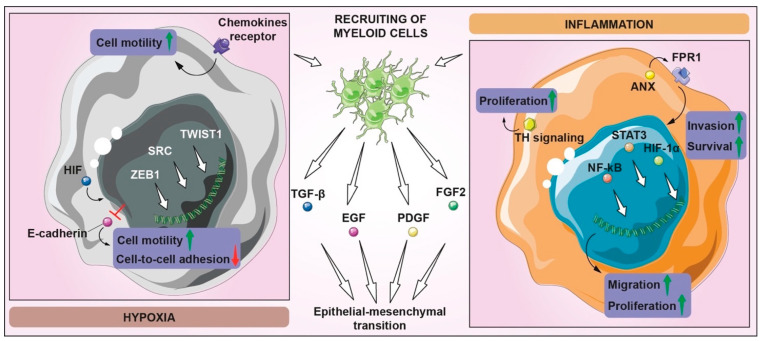Figure 5.
Tissue invasion and metastasis in GBM. Many pathways are involved in the invasion processes of GBM, especially in hypoxic and inflammatory contexts. Hypoxic and inflammatory conditions lead to the recruitment of myeloid cells, which promote TGF-β, EGF, PDGF, and FGF2 signaling, triggering the EMT initiation. In hypoxic conditions, HIFs regulate ZEB1, inhibiting E-cadherin expression, which contributes to the loss of cell–cell adhesion and the increase in motility, also supported by the activation of TWIST1, SRC, and chemokine receptors. In the inflammatory context, the upregulation of proinflammatory genes determines an increase in migration and proliferation, while ANX, through the FPR1 activation, induces the heightening of invasion and survival ability by means of STAT3, NF-kB, and HIF-1α pathways. Moreover, proliferation is also promoted by TH signaling, derived from microglia-GBM crosstalk.

